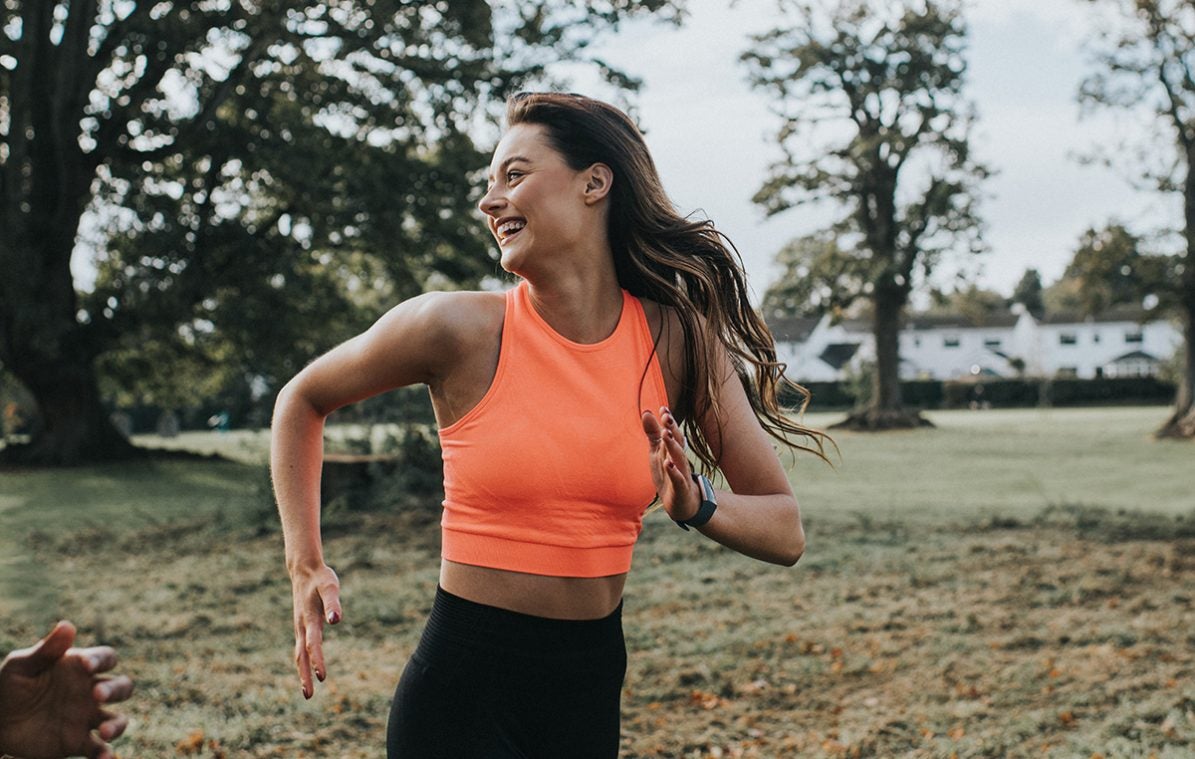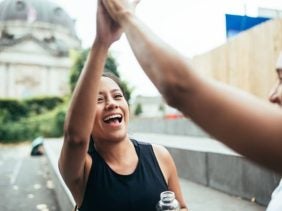5 Secrets for Running Outside With Allergies
 ©Catherine Falls Commercial
©Catherine Falls Commercial
Sunny days are here at long last! This is the time to leave the gym and take your workouts outdoors. But the pollen count can make this challenging if you’re allergic, especially if you’re very active. The problem is that trying to perform as well as usual, despite the pollen levels, can risk making your symptoms worse, and possibly damaging your health. Luckily, we’ve got 5 handy tips for how to enjoy exercising outdoors, despite hay fever and pollen allergies.
You don’t want sudden cravings to disrupt your plans. Our Protein Balls give you the energy you need, just when you need it.
Exercising outdoors can make symptoms worse
Blocked nose, constant sneezing and itchy eyes: hay fever sufferers will be all too familiar with the effects of high pollen levels at this time of year. Jogging, cycling or other forms of outdoor exercise make you automatically breathe in more deeply, allowing pollen to easily get into your airways and irritate them all the more.
But that’s no reason to hide away indoors while life goes on outside. In fact, it’s especially important to stay active during pollen season and to train your respiratory muscles. This will strengthen them and help protect them against the effects of pollen allergies.
Things to remember when exercising with hay fever and pollen allergies
A pollen allergy or hay fever shouldn’t stop you keeping fit outdoors and doing your body good. The only difference is that you should exert yourself a little less than you usually would, as the pollen count may already be sapping your energy. Our 5 tips can prevent pollen levels from bothering you too much when exercising outdoors.
#1 Plan your workout time carefully
Aim to work out in the morning or evening, depending on where you live. At those times of day, there’s not as much pollen in the air that you’ll inhale or that can end up sticking to your hair or clothes. In the countryside, the airborne pollen count is at its lowest in the evening; in the city, it’s lowest in the morning.
If you’re lucky enough to be able to work out by the sea, you should definitely make the most of it. In coastal areas, the wind sweeps in over pollen-free waters, so you can breathe in deeply without any issues. The same goes for the mountains: wind cannot carry pollen higher than 1,600 meters, so striking out for the summit is twice as rewarding for allergy sufferers.
#2 Wait for rain
If you’re a fair-weather athlete, this is one time of year when you’ll have to grit your teeth and head out in the rain. Running in bright sunshine might do wonders for your mood and summer glow, but it will play havoc with your allergy. Rain, on the other hand, essentially washes the air almost clean of pollen, leaving nothing to irritate hay fever/allergy sufferers.
Look on the bright side: there’s no such thing as bad weather, only inappropriate clothing. This is your chance to splash out on some proper outdoor gear!
#3 Optimize your route
We get it: it’s all too tempting to run cross-country across beautiful summer meadows blooming with flowers. Ultimately, though, those gorgeous views simply aren’t worth it if you have to break off your run because your nose is prickling and you’re struggling to breathe. In spring and summer, fields of flowering plants are pollen central, and you’ll kick up a whole lot of the stuff as you run along.
So it’s much better to avoid open areas at this time of year. Instead, take your exercise somewhere like a deciduous forest, where the leaves of the trees act as a natural filter against pollen. Just be careful if you’re also allergic to certain types of tree pollen.
#4 The right equipment
Even if you don’t normally wear glasses, you should protect your eyes when exercising outdoors. People who suffer from hay fever often have sensitive membranes over their eyes (conjunctiva), which can become especially irritated when exercising outdoors.
Wear sunglasses, sports glasses or even special anti-pollen glasses to keep the pollen out. Anti-pollen glasses are a bit like swimming goggles: they fit extra close to your face around the eyes for extra-effective protection.
Our Recovery Aminos replenish your reserves after an outdoor workout. They’re packed with plant-based BCAAs, vegan L-glutamine and fast-acting carbohydrates, but have zero unnecessary additives.
#5 Essential: the post-workout wash
Put your clothes in the wash as soon as you get back from your exercise session, then jump straight in the shower and wash your hair. This is the one way of making sure pollen won’t be stuck in your clothes or hair; otherwise, you’ll just end up breathing in it again even when you’re home. Don’t hang your clothes outside to dry, though: wet clothes are a pollen magnet, so doing this defeats the whole purpose of washing them.
Our tips should help you make it through pollen season while staying fit, but an allergy specialist should always be your first port of call if you need to discuss your health. They can accurately assess the severity of your allergy symptoms, how much exercise you can take on, and which medications it may be beneficial to take alongside your exercise regime.
More things to know from foodspring:
- 6 Surprising Reasons to Move Your Workout Outside
- 7 Amazing Ways to Get Fit Outside – No Running Required!
- Surprising Benefits of Rock Climbing
- Partner Workouts – Make Your Workouts Twice as Much Fun
Sources for this article
We at foodspring use only high-quality sources, including peer-reviewed studies, to support the facts within our articles. Read our editorial policy to learn more about how we fact-check and keep our content accurate, reliable, and trustworthy.
































